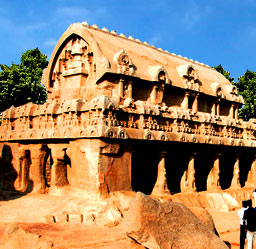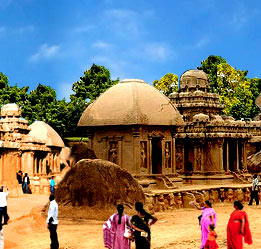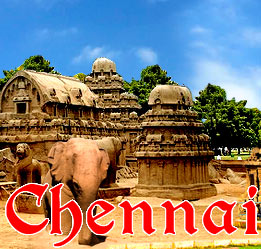The 'Gateway to South' Chennai is a spectacular blend of all sights and walks of life. Being the capital city of Tamil Nadu and fourth largest city of the country, it has an adequate confluence of culture, traditions, music, movies, technology and economy which is evidenced through the visible ancestrally rich history and the modern glamorous pubs and shopping malls. On the spiritual front, the city is embraced with several temples, mosques, churches and other shrines depicting warm acceptance of all beliefs in the city. One of the endowments of the city is the famous Jain temple, Adeeswar Temple near Chennai. The spiritual and enchanting surroundings of the temple would help you relieve your body and soul from all the humdrums of daily chores.
The temple lies just 9 kilometres away from the city, at Polal village, near the Redhill Lake on the Grand Trunk Road, connecting the city with the neighbouring Southern states. The temple reflects roots of Jainism in Tamil Nadu as well as the growth of its traditions, making it one of the most significant and important shrines among Indian Jains. The temple is devoted to the first Tirthankar Rishabhadev who is also known as Adi Bhagwan, Adeeswar, Adi Nath and Adi Jain. The temple, sometimes referred to as the Polal Temple, is quoted in Tamil literature, inscriptions and legends for its divinity and sanctity.
The temple founded in as early as the first Century B.C. has several legends backing its existence. One of such legend states that Valluvar, who lived at Mylapore in the closing years of the first Century B.C. or in the early years of the first Century A.D. was a firm believer and a constant worshipper of the deity of Adi Bhagwan installed in the Polal temple. His notable creation, Thirukkural, begins with the first couplet revering the pious Adi Bhagwan, who was the first omniscient teacher of Jainism.
However, a class of the archaeologists and scholars believe that the temple originated during the reign of the Pallavas in the time span of the 4th to 8th Century A.D. It is confirmed by examining some of the inscriptions scribbled in the temple as well as at some adjoining Hindu Temples. These inscriptions reflect that the renovation of the Adeeswar temple was conducted in the twelfth or thirteenth Century A.D. It also raises possibilities that some of the kings gifted parts of their lands for its maintenance. The temple was not much known earlier; however, after the opening of the Grand Trunk Road, a number of tourists and pilgrims along with the followers of Jainism from different parts of India visit the temple.
The principal deity in the Adeeswar Temple or Adhiswara Temple Chennai is Risabhadev, who is the first omniscient teacher of Jainism.





